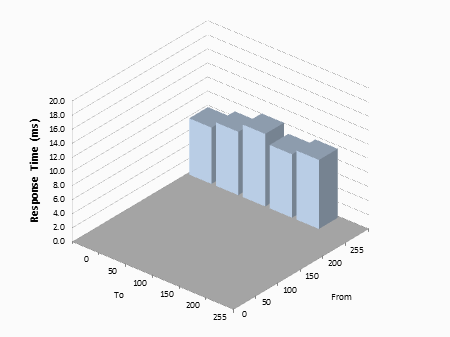<Crosspost>
Some of you readers have finally read my brand new GtG vs MPRT explainer, but this doesn't even barely scratch the surface of a complex topic that is full of university thesises and patented research.
This may need to become a new article.... But in famous Blur Busters "popular science" fashion -- here's a forum reply which I may later reuse into a future article. (It's very common for me to reuse my forum-reply material into future articles, on popular demand).
Chief Blur Buster Answers: Why Are There Multiple GtG Numbers?
That's because different color response combinations are slower than others. Or the measurement temperatures may be different. Or the cutoff-point standards are different (90% vs 99% vs 100%). Etc.
The pixel color-change speed between white->black may be fast (e.g. 0.5ms) but the pixel color-change speed between grey->lightgrey may be slow (e.g. 2ms).
Some sites such as TFTCentral measures pixel response in a heatmapped or 3D barcharted manner.

That tells you why some sites display a Min/Avg/Max for GtG pixel response.
That's even just a simplified one. Some manufacturers measure all of them, all 8-bit to 8-bit color combinations, creates over 65,000 different GtG numbers. Yes, thousands of different GtG numbers for the SAME panel. Ouch!
Well-programmed overdrive is the playing field leveller -- getting a tight Min/Avg/Max span is only possible with a moderate amount of overdrive (not too little, not too much). Overdrive can never be perfect, but it can make a huge difference.
Now, pixel transition speed is also called grey-to-grey, as all LCD pixels are monochrome -- they're just colorfiltered at the subpixel level (3 LCD pixels are black and white just like an old wristwratch -- but covered by a red, green, and blue filter). So the industry has called it "Grey to Grey pixel response speed" for decades. The pixel response speed is actually more accurately a subpixel response speed, with 3 separate, independent grey-to-grey subpixel transitions occuring per color LCD pixel. The pixel transition speeds for each subpixel is usually identical or nearly identical (owing to slightly different microwire lengths or active matrix transitor placements, etc).
So the single GtG number you see, opens a horrendously huge galactic-sized mathematical Pandora Box, containing over 65,000 different GtG pixel transition speeds, some or all of which can vary based on temperature (slower at cold temps on cold parts of panel), location within panel (panel nonuniformities), and subject to measurement cutoffs dictated by VESA standardization (the amount of time 10% to 90%).
Cutoff points had to be made because measuring equipment was noisy, and sometimes the 10% cutoff point was barely above the measurement noisefloor (the noisy oscilloscope line). So fully 0% nor fully 100% was often impractical because it was often not possible to measure at all in oscilloscope measuring equipment! Especially if GtG0.1% and GtG99.9% was beyond human-visibility anyway. The industry came up with a compromise decades ago, to standardize at a 10% and a 90% cutoff point, even if the stuff below 10% and the stuff above 90% is sitll human visible (ghosting artifact).
Advertised and published numbers, are at best, a mathematical average (sometimes average of thousands of measurements!), combined with standardized cutoff points (10% to 90%), and measured at a standardized temperature (usually 70F or 20C) that may be different from your chilly or overheated computer room.
So next time some online fodder claims "a manufacturer is lying" about GtG... Let's at least remotely understand the calculus why it's so goddamned hard even for TFTCentral to try to give single GtG numbers...
</Pandora Box>
</Crosspost>

